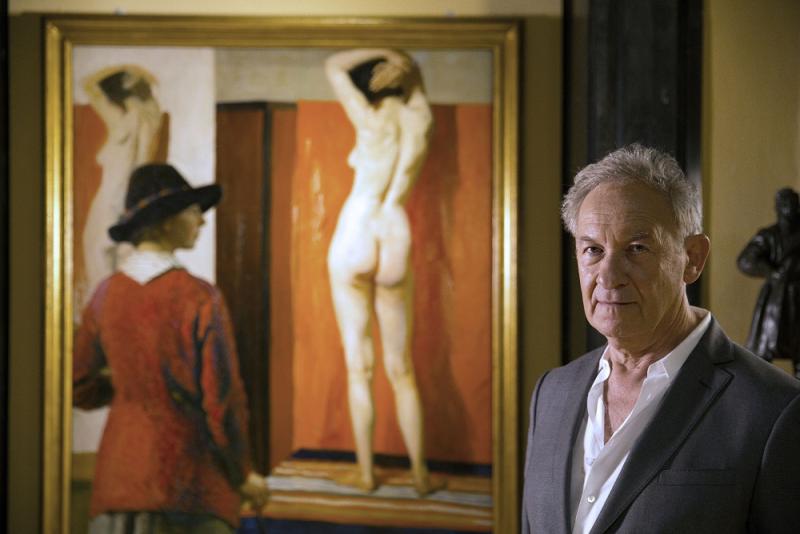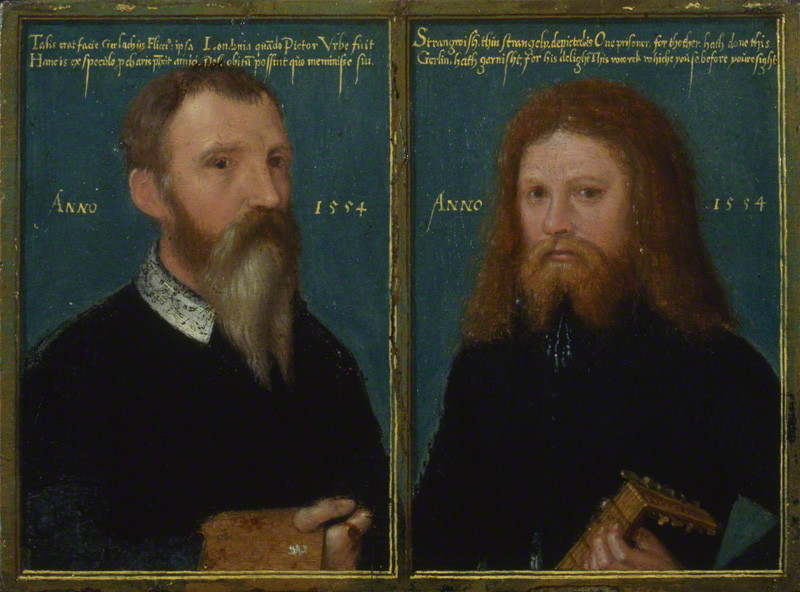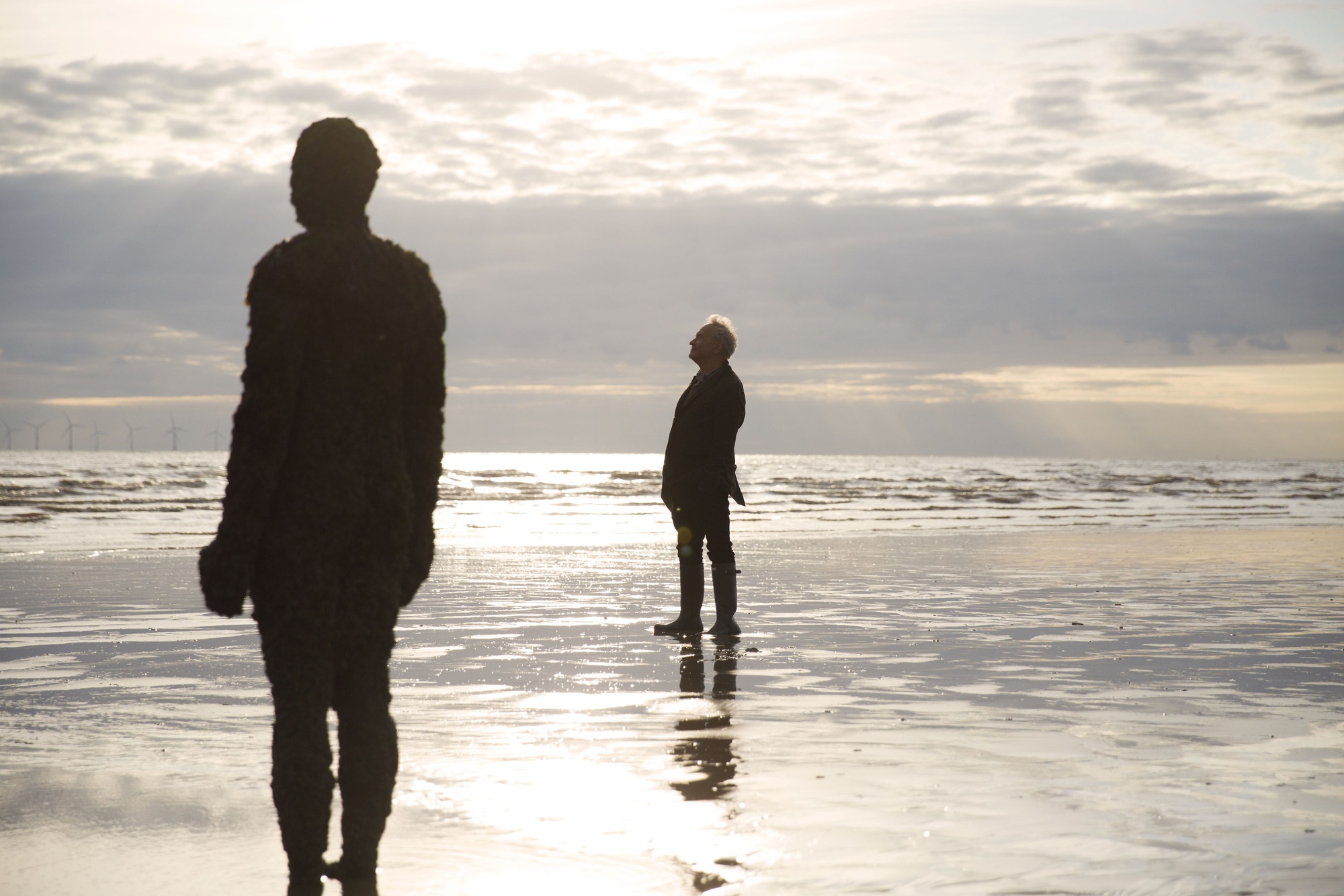The Face of Britain by Simon Schama, BBC Two | reviews, news & interviews
The Face of Britain by Simon Schama, BBC Two
The Face of Britain by Simon Schama, BBC Two
Virtuoso journey through British portraiture concludes with artists depicting themselves

This was the fifth and last in a series of hour-long programmes amounting to a vivid, varied and extraordinarily lively history of Britain. Although ostensibly a history of portraiture, the images have been hooks for Simon Schama, that most ubiquitous historian who bears a rather charming resemblance to Tigger – very bouncy, very chatty, very enthusiastic, a little self-regarding – to subtly engage us in a journey through the political and social landmarks of British history.
Schama is famous, notorious even, for simply unstoppable floods of eloquence, both spoken and written, occasionally teetering into verbiage: never use one word where 10 might do. Moreover there is hardly any obvious, unusual, surprising or glittering fact which does not delight him. But when he’s in full flow with a subject that engages him, and to which his own idiosyncratic character seems ideally suited, it is cultural history (perhaps cultural journalism) in the best sense.
The whole was informative, often surprising, always entertaining and accessible
As a viewer, the best thing to do is just to go with the flow. Schama is unafraid of facts, and also even delights in the cliché, which he is able to present new-minted, as it were. Even a phrase such as “the human condition” – surely the definition of all portraiture? – trips off his tongue easily. Sometimes the assumptions or comparisons are breathtaking in the wrong way: it is highly unlikely that Matisse would have killed for the opportunity to imagine the subtly zinging colour combinations of the ornamental ribbons in Laura Knight’s hat and the carpet in her studio in the quite astonishing self-portrait of 1913 (Schama in front of the work, main picture.)
In it, Knight shows herself stylishly dressed, palette in hand, head turned away, looking obliquely at the back of her naked female model on her posing plinth. The half-finished painting is on an easel behind. Schama pointed out that this gifted artist, being a woman, was not allowed to attend life-drawing classes at Nottingham School of Art, and that this triple portrait – naked woman posing, naked woman in the painting within the painting, Knight herself – could perhaps be seen as a comment on such restrictions. Moreover, her Cornish portraits of stylish young women on cliff-tops, lazing in the sun, were replete, he commented, with pent-up emotions and burning ambitions. That was quite a lot to upload onto this particular image, and it almost vanished under the weight of his interpretation.
 The introduction to the self-portrait, commissioned by definition only by the artist him- or herself, pitted the problem of contrasting attitudes, which actually pertain to all portraiture: vanity versus verity, flattery versus truth. We opened with some very modern moments: Tracy Emin appearing drunk on that notorious Turner Prize televised discussion which catapulted the artist to tabloid fame, and a queasy look at her notorious My Bed, stained sheets and condom-complete, described by Schama as an orgy of self-indulgence, and a confusion of exhibitionism and exhibition. But, perhaps trying to have it all ways, he confessed to a genuine respect for the piece, as well he should. It is a seminal (sorry) look at an individual life as lived.
The introduction to the self-portrait, commissioned by definition only by the artist him- or herself, pitted the problem of contrasting attitudes, which actually pertain to all portraiture: vanity versus verity, flattery versus truth. We opened with some very modern moments: Tracy Emin appearing drunk on that notorious Turner Prize televised discussion which catapulted the artist to tabloid fame, and a queasy look at her notorious My Bed, stained sheets and condom-complete, described by Schama as an orgy of self-indulgence, and a confusion of exhibitionism and exhibition. But, perhaps trying to have it all ways, he confessed to a genuine respect for the piece, as well he should. It is a seminal (sorry) look at an individual life as lived.
We embarked with the 13th century illuminator William de Brailes and his self-portrait, thought to be one of the very earliest, in his manuscript for a Book of Hours (also one of the earliest to survive) that is now in the British Library. It was a delighted and delightful image of a real named person – he signed it as well, and had a little banner saying “William de Brailes painted this”, in Latin of course – amongst angels and hellfire and all such Christian appurtenances.
Then there was an astonishing tiny double, or twin, portrait painted in the Tower of London in the 1550s by the German artist Gerhard Flicke, painter to the Tudors, who for reasons unknown shared a cell in prison with a pirate called Stangwish; it is thought to be the first self-portrait in oils painted in England (pictured above right © National Portrait Gallery, the pirate in the right section).
Schama’s subsequent choices were highly idiosyncratic; the little-known 17th century painter, Isaac Fuller, with his swagger self-portrait into which Schama read an intelligent and devastating melancholy at a life wasted in drink – and murals for pubs too, when he had once decorated (rather badly) the chapel at All Souls College, Oxford in imitation of Michelangelo. The presenter duly envied Fuller his dashing pink and silver scarf, and admired his huge red velvet hat.
 Then we leapt a century and more to look at Samuel Palmer: an engrossingly detailed examination of his marvellous self-portrait, where his use of white chalk with a quietly virtuoso technique highlighted his introspective expression. But we also wandered off to look at his imaginative landscapes – an idealised landscape, yes, but faeryland? Surely not, Professor Schama – of his beloved Shoreham before he ended his career with years of commercially viable mediocrity.
Then we leapt a century and more to look at Samuel Palmer: an engrossingly detailed examination of his marvellous self-portrait, where his use of white chalk with a quietly virtuoso technique highlighted his introspective expression. But we also wandered off to look at his imaginative landscapes – an idealised landscape, yes, but faeryland? Surely not, Professor Schama – of his beloved Shoreham before he ended his career with years of commercially viable mediocrity.
We moved on to Sir William Orpen, society portrait painter, war artist, and self-portraitist, who showed himself in various costumes and ended with a truly remarkable quadruple portrait of a fractured personality, an unsung masterpiece. And finally to Lucian Freud and the artist’s preoccupation with his own ageing flesh; to Mark Quinn and his self-portrait in his own blood, held in a refrigerated case; and to Antony Gormley’s hundred iron men, casts of his own body, marooned for two miles on the seashore near Liverpool (Schama in situ, pictured above), submerging and emerging with the tides.
Along the way we had an underlying commentary on topics ranging from the rise of individuality, the growth of cities, stirrings of female emancipation, the horrors of war, and a prodigious explosion of introspection, a search – no fear of hyperbole here – for the soul through the body. The whole was informative, often surprising, always entertaining and accessible, if at times unintentionally hilarious as Schama lurched into awed schoolboy mode. And as the programmes were made in association with the National Portrait Gallery, much of the art under discussion (there's a book accompanying the series, too) is on view there for us all to view, permanently and for free: the majority of the works, except for a handful presumably (and tantalisingly) held in private collections, mentioned in the series are currently on special display there.
rating
Share this article
The future of Arts Journalism
You can stop theartsdesk.com closing!
We urgently need financing to survive. Our fundraising drive has thus far raised £49,000 but we need to reach £100,000 or we will be forced to close. Please contribute here: https://gofund.me/c3f6033d
And if you can forward this information to anyone who might assist, we’d be grateful.

Subscribe to theartsdesk.com
Thank you for continuing to read our work on theartsdesk.com. For unlimited access to every article in its entirety, including our archive of more than 15,000 pieces, we're asking for £5 per month or £40 per year. We feel it's a very good deal, and hope you do too.
To take a subscription now simply click here.
And if you're looking for that extra gift for a friend or family member, why not treat them to a theartsdesk.com gift subscription?

Add comment